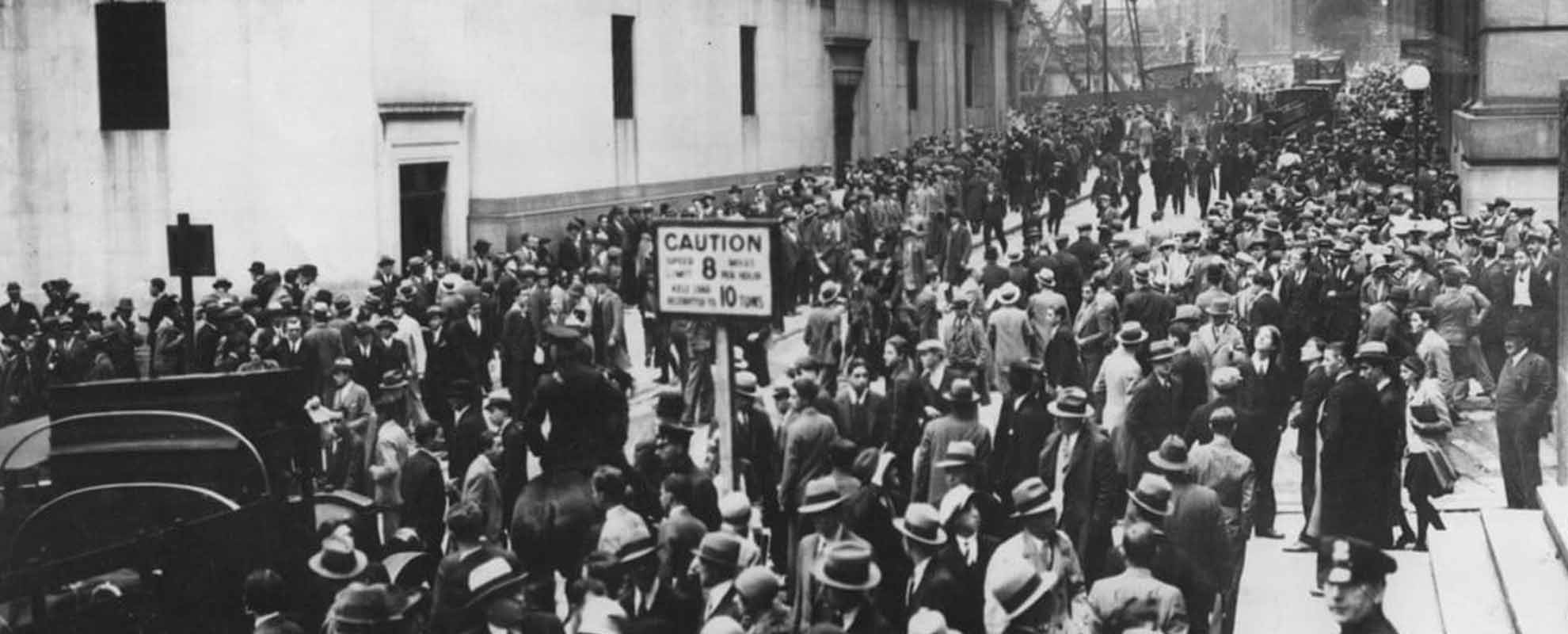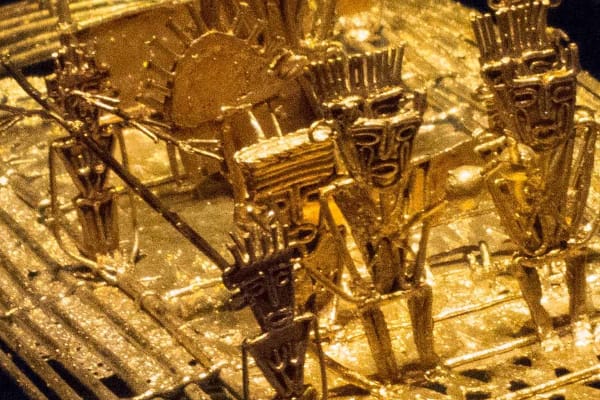
Is There Gold In Cornwall?
Uncover the truth behind Cornwall's elusive gold - its ancient origins, rare discoveries, and the future of sustainable mining in Britain's historic heartland.

The stock market crash of 1929 was one of the most devastating events in American history. Almost a century after the event, it’s still regarded as the most disastrous financial crisis of all time, directly bringing about the Great Depression. At that time, the United States was already a major world economic power. The repercussions of the Great Depression were felt all across the world, hitting a number of European countries and even some Asian countries.
Prior to the Great Stock Market Crash, the United States was enjoying a sustained period of economic growth. The market was in an upward trend in the 1920’s and investments in shares were on the increase. Many companies and banks also turned to the stock markets for their investments. Then, almost without warning, the process started to reverse in October, causing widespread panic. This panic led to the frantic selling of shares, snowballing into the biggest market crash in all time.
The 1920’s was a period of boom and optimism with a lot of expendable income. It’s known as the “Roaring Twenties” because people were enjoying such a great time, they thought they were living in the Golden Age. The optimism level was so high that a good number of people invested their income in shares. Some people withdrew from their savings from banks or even took loans to invest in the stock market. Over a period of four years, from 1925 until September 1929, the prices of stocks kept increasing as people kept investing. The growth in these four years was nearly one hundred and twenty percent. Generally, the economy was booming and it’s reflected in massive new investments in the share market. The total income kept rising, peaking at about ten percent per year from 1921 to 1923. After that, total income rose around 3.5 percent per year till 1929. In these years, the price of wholesale products went down by about one percent. The rise in prices was different in each industry. In promising and fast growing industries like steel, telegraph, airline manufacturers, chemicals, and oil, the increase was even higher.
On October 24th, 1929, stock prices dropped drastically so a lot of people started to sell their shares in an effort to cut down their losses. This caused the share prices to drop further. Scores of people started gathering around the stock exchange to watch the change in prices to keep track of the situation. Some bankers got together and invested some money back in the share market. By afternoon, the situation got better and people stopped selling their shares. Nearly thirteen million shares were sold that day. It was almost double the previous single day record.
Though the market ended on a positive note on Thursday, there was still some panic among the people. The following Monday, many people continued to sell their shares, causing the prices to fall even more. The next day is one of the worst days in the history of the stock market. It’s known as “Black Tuesday”. On October 29th, 1929, the orders to sell were so high that the ticker was unable to cope. There were only orders to sell and not a single order to buy! Even bankers were rumored to be selling their shares, further adding more frenzy to the panic. Close to 16 million shares were sold in that one day, estimated to worth about $14 billion. By Friday, the situation was so out of control that the decision was made to close down the stock market. It was only reopened on November 4th, 1929. The market continued its downward trend for a few weeks before stabilizing on November 23rd, 1929. Nevertheless, the market was on a decline for the next couple of years.
There was a general sentiment that the shares were overpriced. The stock market crash restored share prices to a level which reflected their value more accurately. In actuality, the value was merely representative of the rise in dividend payments. This unnatural increase in share prices was mainly attributed to the people who opted to buy shares as an investment to earn money quickly. As the economy grew, workers received higher wages, leaving them with more money to spend. Naturally, the working class saw the stock market as the fastest and best way to grow their money. Products were being manufactured in record numbers. The increased money flow and the setting up of new industries led to even more surplus. Not to be left behind, banks got into the act by reducing their money lending rates so people could borrow more money. Margin buying was another important factor in the rise in stock market investment. It gave an opportunity to people who did not have the money to buy shares in hope of paying it off with the profits they get after they sell the shares.
In the aftermath of the stock market crash, the economy was further hurt by the tightening of the monetary policy by the Federal Reserve. Before the economy could recover, there was the Great Depression. As the economy shrunk, the demand for goods went down but companies were still producing the same quantity of goods. This resulted in the decrease in prices of goods and services. As a result of the Great Crash, there was no dispensable income so people could not afford to buy even these products, which were already cheaper. In no time, companies were forced to shut down. Similarly, farmers also found themselves with a surplus of crops. In those days, banks were not governed by any regulations. When the investors lost their money, some banks had to close down due to a lack of funds.
The Great Depression started with the Great Market Crash, causing serious economic problems in some other countries. The intensity and timing varied from one country to another. A decade of unemployment, deflation, and poverty followed until World War II. Income, profits, prices, and almost everything else took a hit, reaching rock bottom. It culminated in an economic collapse. There are various theories and points of view that attempt to identify the cause of the Great Depression. Farmers were hit by the depression as there was a famine during that time and they did not have any food or money. Due to lack of funds, they couldn’t plant more crops. To make things worse, loans were not available either.
The government decided to take preventive measures for the future to avoid a recurrence of a similar crash. A commission was established called the Pecora Commission which would research the reasons for the crash. The Securities and Exchange Commission was set up to regulate the functioning of the stock market and other bonds and commissions. The Federal Deposit Insurance Corporation and the Federal Crop Insurance Corporation were set up to insure the investments of individuals and farmers respectively.
At the bleakest moments of the Great Depression, Franklin D. Roosevelt became the 32nd President of the United States. During his “First Hundred Days” in office, Roosevelt decided to revive the dying banking industry. He ordered all the banks to be closed for three working days and reopen with limits on withdrawals. In time, people began to regain confidence in the banks, allowing them to function better. The passing of Glass-Steagall Act in 1933 ensured that there was a separation between banks that take deposits and give loans in reference to commercial banks and investment banks which were in charge of underwriting, issuing, and distributing shares and bonds.
Roosevelt also set in motion the New Deal which was a series of economic programs that were rolled out from 1933 to 1938. The New Deal was the remedy to the Great Stock Market Crash and the Great Depression that followed. It can be categorized as the three R’s, namely, Recovery, Relief, and Reform. The first step was to sustain the recovery of the economy and provide relief measures to the downtrodden and unemployed. A reform of the financial system was essential to prevent a crash of such magnitude. Though the New Deal did not immediately cause a turnaround of the economic situation, it helped the economy to slowly recover and get back on its feet.
The Great Crash and the Great Depression clearly exhibited the frailties and dangers of a totally laissez faire economy. This is why it’s absolutely important for governments to monitor the markets so that the economy will not be out of cash.
Follow these links to learn more about the Great Stock Market Crash and the Great Depression.

Uncover the truth behind Cornwall's elusive gold - its ancient origins, rare discoveries, and the future of sustainable mining in Britain's historic heartland.

Many cultures have been lured by the beauty and power that gold represents.

The simple answer is 'no', gold is not magnetic. However, without further explanation, items of gold jewellery will likely get incorrectly rejected, so let's delve a little deeper!